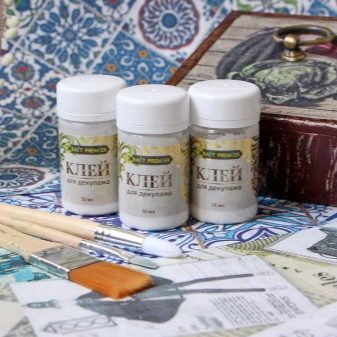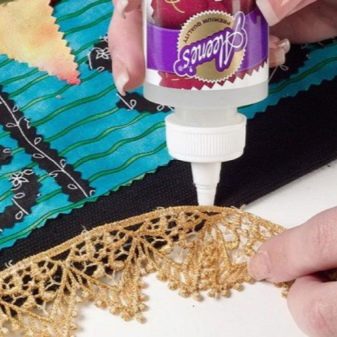Choosing glue for needlework
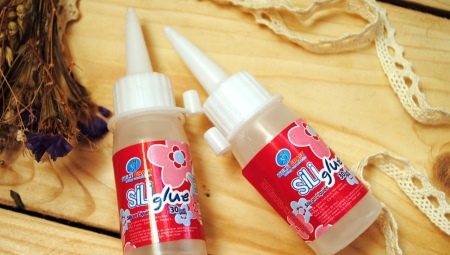
Inspiration is the most important thing when doing handicrafts, as well as other types of creativity. However, even the most beautiful brooch, basket or notebook made with your own hands will not please the owner for long if you glue them together with the help of low-quality or inappropriate glue. Each material or texture requires the use of a certain binding component, so needlewomen should know well what types of glue are needed for a particular workpiece and how to work with them correctly.

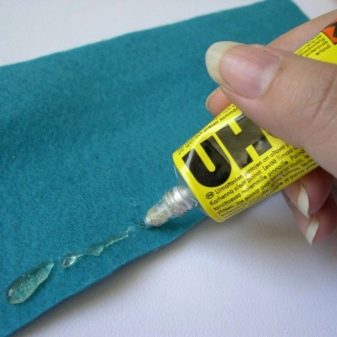
How is it used?
To make the finished product look neat and last as long as possible, you should carefully read the instructions for working with glue on the package. Each type has its own characteristics, for example: the time of solidification or the temperature to which it can be heated. But in general, there are general recommendations that should be followed during gluing work.
Firstly, this is the mandatory preparation of the surfaces to be glued. Materials must not only be clean and dry from moisture - they must also be thoroughly degreased. This can be done both with special means and with an ordinary alcohol solution. We should also mention wood. Any wooden surfaces must be thoroughly sanded before work.
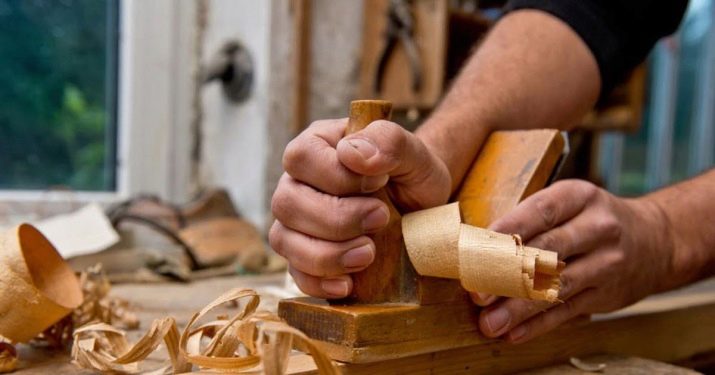
Secondly, it is direct application. The heavier the parts, the more glue is required to join them.
If bubbles appear on the surface of the viscous mass when applying silicone or polymer compounds, it is best to pierce them with a sharp needle to remove unnecessary air.
And finally, the last thing is to wait until the glued parts are completely dry. Depending on the brand and type of glue, this can take from a few minutes to a whole day.During this time, the product is best stored in a dry place and away from sunlight.
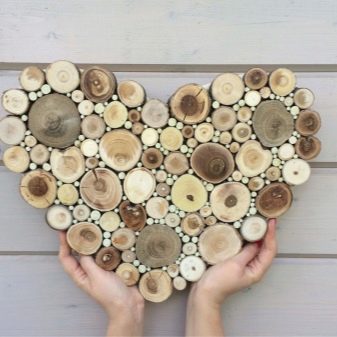

When working with any glue, you should also follow simple safety rules:
- apply the product with a brush or spatula;
- do not apply more than is required for effective adhesion;
- remove excess with a cloth or a special napkin;
- use gloves when working with hot glue;
- ventilate the room after work;
- in case of contact with mucous membranes, rinse with plenty of water and consult a doctor.

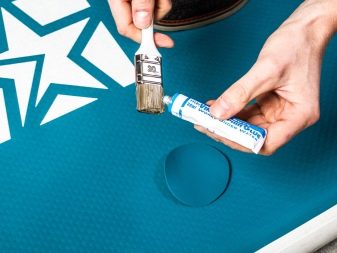
There are also special goggles and respirators designed for working with toxic adhesives, but they are not used for ordinary handicrafts, so such serious protection is not necessary.
Species overview
Of the whole variety of types of glue for needlework, several of the most popular can be distinguished.
- PVA - a product in the form of a thick liquid of white or milky color without a special odor. For needlework, the stationery PVA-K is best suited.
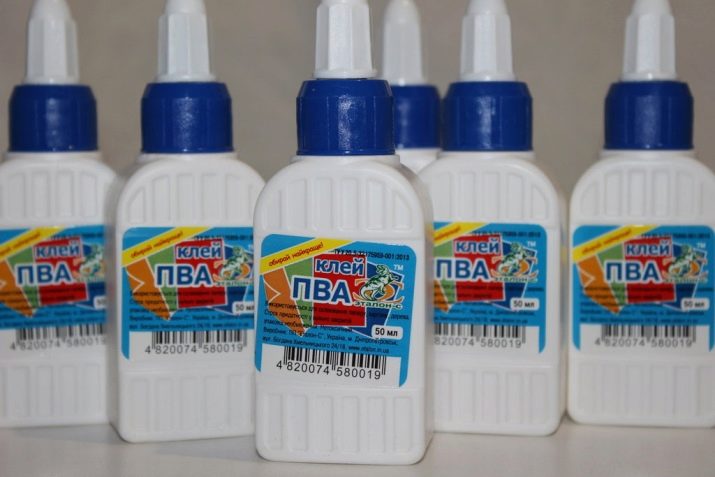
- Polymer (hot) glue - a substance that can repeatedly change its shape and properties when heated. For home crafts, a special glue gun with special thermoplastic rods is best suited. Many needlewomen speak very positively about such a desktop assistant, noting the convenience and ease of use.
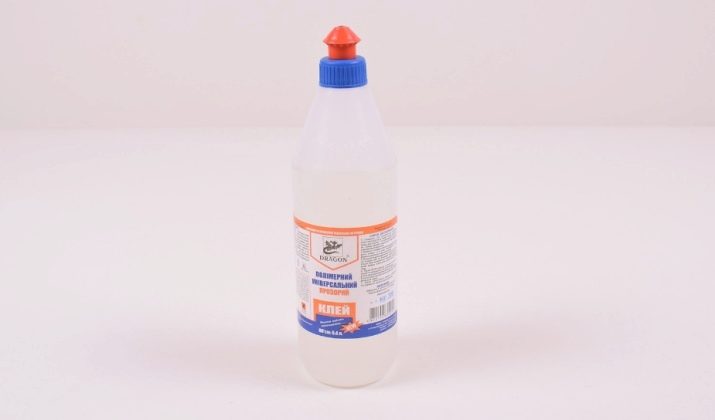
- Superglue - familiar to all "Moment" quick drying, with which you can not only glue a beautiful figurine or glue rhinestones to your purse, but also repair a broken mug.
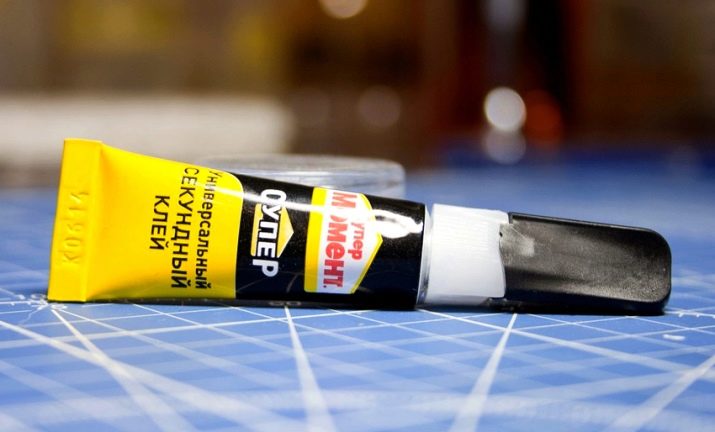
- Epoxy adhesive (epoxy resin). They work when joining heavy materials of various textures, such as glass or metal.
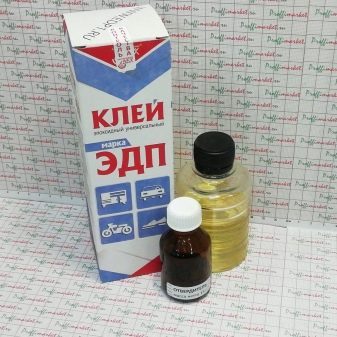
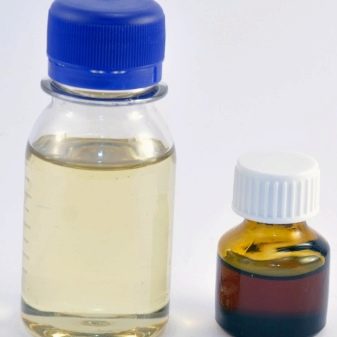
In addition, there are several types of more highly specialized adhesives:
- for wood;
- for rubber parts;
- for fabric;
- polyurethane;
- silicone;
- aerosol.
They can all be classified into two types: neutral and acetic.
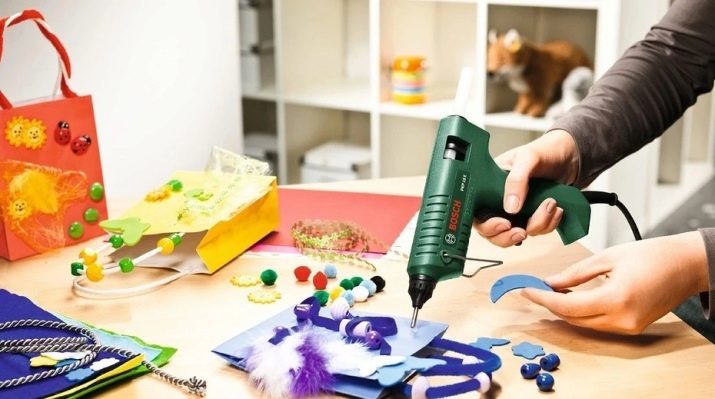
For home use, it is necessary to choose an exclusively neutral type of sealant that does not emit harmful substances during operation.
Which glue should you choose?
It is worth choosing an adhesive for work when the materials are finally determined. Some types can be quite versatile, and some combine well only certain raw materials.
- For paper and cardboard - everything is suitable except for silicone glue, polyurethane and epoxy resin.
- For wood - it is best to use a special tool, but ordinary superglue, "epoxy" will do an excellent job with this.
- For fabric and leather - special agent for fabric and rubber, superglue or aerosol formulations.
- For rubber parts - rubber and silicone glue.
- For foam and ceramics - superglue, hot and polyurethane.
- Heavy parts made of metal, glass, stone and other materials are best glued with epoxy, silicone or polyurethane. In some cases, the usual Moment glue will do.
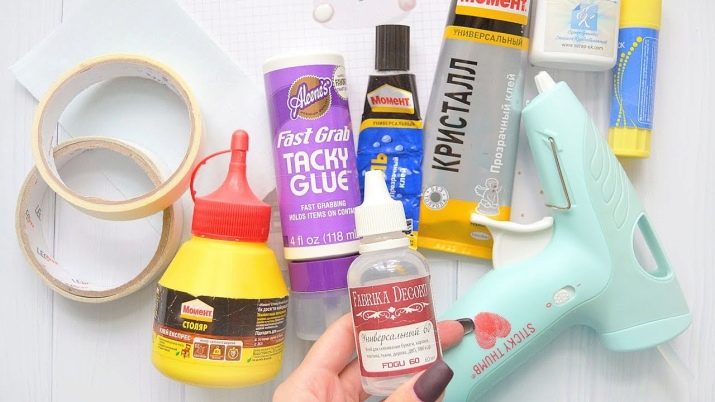
In addition to the correct selection of the desired type, it is advisable to evaluate the composition itself. The structure of high-quality glue should not be too thick, but also not spread like water. There should be no lumps or air bubbles inside. Do not try to dilute dried glue residues with water or solvent - it is better to purchase a new package.
